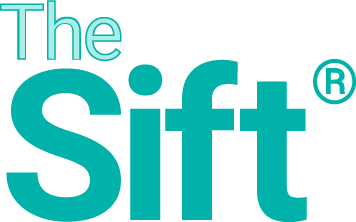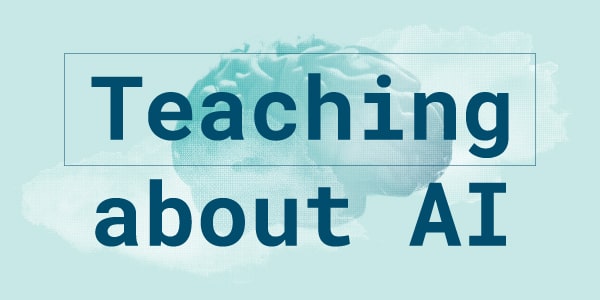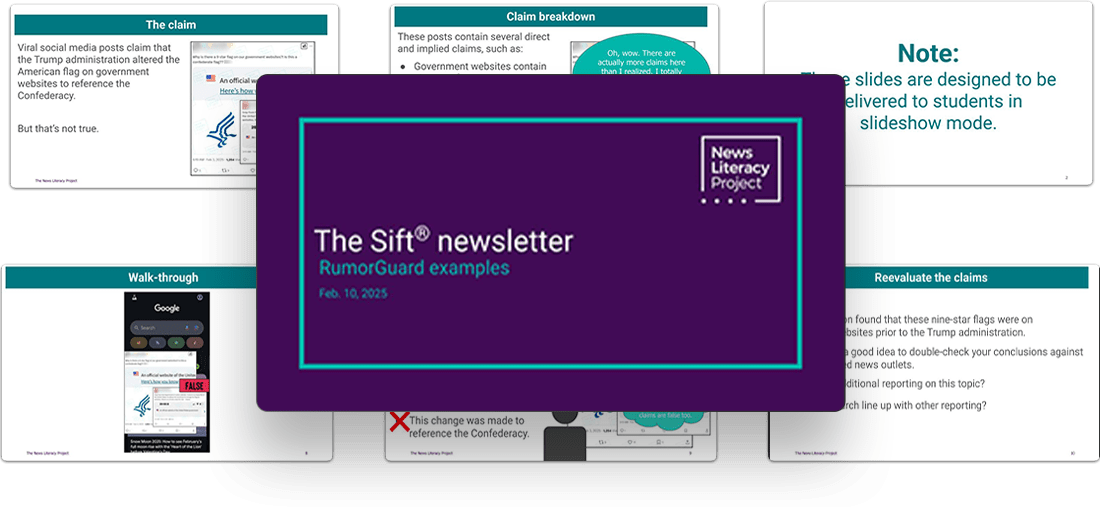The Sift: Gen Z knows journalism? | USAID rumor
| Note: There will be no issue of The Sift next Monday (Presidents Day). We’ll return to your inbox on Monday, Feb. 24. |
In this issue
Gen Z knows journalism? | USAID rumor | RumorGuard slides | Daily Do Now slides
 Daily Do Now slidesDon't miss this week's classroom-ready resource.  |
Top picks
Educators, here are the latest news literacy topics and tips on how to integrate them into your classroom.

| As the way we consume media changes, so does journalism. Illustration credit: Shutterstock. |
1. Gen Z journalist says her peers don’t know what her job is
Is a journalist someone who … journals? No, not quite, but that was what a 22-year-old race car driver guessed when chatting with Olivia Hicks, a sports reporter who covers Formula One racing. Hicks wrote in this column, “Gen Z’s misunderstanding of journalism is a nationwide — if not global — epidemic.” She claims her Generation Z peers don’t always know what a journalist is and are increasingly relying on influencers and celebrities to try to get news.
Hicks observed that “there are more people ‘reporting’ than ever before,” and it’s transforming sports journalism. As there’s more media access granted to podcasters and content creators, Hicks said sports publications are killing negative stories in fear of having press credentials revoked, and reporters are accepting gifts from sports teams — a violation of journalism ethics.
| Discuss: |
How are journalists and “news influencers” different? How are they similar? How do ethical guidelines work to increase credibility? If teams could control what information is shared about their organization and players, what kinds of stories would get published and what kinds would go unreported? If teams could punish reporters for doing stories they don’t like, what might some of the outcomes be? How might that impact reporting about player safety, accountability and controversies?
| Idea: |
Ask students to complete a weeklong news diary using these worksheets. At the end of the week, use the second page to have students evaluate their news source – and reflect on how that coverage might have been compromised by a lack of ethics and independence.
- Another Idea: Use the “Ad or not?” slide in Week 15 of the Daily Do Now resource.
| Note: |
Check out “Hard hits, hidden truths: How investigative journalism tackled the NFL’s concussion problem,” an NLP webinar presented during National News Literacy Week that features a discussion with investigative journalist Jeanne Marie Laskas about her reporting on concussions in the NFL.
★ NLP Resources:


“Practicing Quality Journalism” (Checkology® virtual classroom).
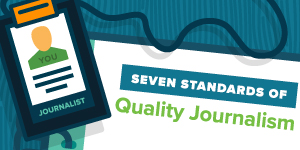

Infographic: “Seven standards of quality journalism”
| Related: |
2. AI-generated e-books appear in libraries
“AI slop,” or low-quality, AI-generated content, is making its way into public library catalogs through e-book platforms like Hoopla and OverDrive. The trend raises concerns about patrons unwittingly accessing low-quality, unedited and inaccurate books, but librarians interviewed by 404 Media said they don’t think AI-generated books should be banned outright. However, they do call for labels on AI-generated books, since busy public librarians don't have the time to vet every book themselves.
| Discuss: |
Do you think most people assume that the nonfiction texts they access through their local library are credible? How can you distinguish between an AI-generated book and a human-written book? What are some potential drawbacks to nonfiction texts “authored” by AI? Should e-book platforms clearly label AI-generated texts? Why or why not?
★ NLP Resources:


Infographic: “6 things to know about AI”


“Introduction to Algorithms” (Checkology virtual classroom).
| Related: |
- “Deepfake videos are getting shockingly good” (TechCrunch).
- “Google’s AI Super Bowl ad is wrong about cheese” (The Verge).
3. Why some marginalized people don’t read mainstream news
BBC News is the most widely used news source in the United Kingdom, but some marginalized Brits say they don’t trust it. In fact, some consider the BBC to be “an arm of the state” that is “talking at them, rather than to or for them,” according to a recent study on marginalized people’s views of the BBC. Most participants in the study were young adults in Wales of Asian or Arab descent. The study found that while the participants were disengaged with the BBC, they were still engaged with the news, turning to alternative sources like Al Jazeera or social media in an attempt to stay informed. This study was conducted by the BBC, which partnered with researchers, following longtime criticism of the BCC — including allegations of bias and a lack of newsroom diversity. When asked for suggestions on ways the BBC could rebuild trust, some participants suggested increasing the number of BBC journalists who live in the communities they cover.
| Discuss: |
The BBC operates under an agreement with the government but has editorial independence. However, its coverage sometimes feels government-directed by those in this study. Why do you think this is? What should the BBC do in response to learning that some of its audience feels this way? How does lack of newsroom diversity impact news coverage and marginalized groups? How could news organizations earn trust?
| Idea: |
Use the News Literacy Project's Newsroom to Classroom program to invite a journalist to speak to your students about covering diverse communities.
★ NLP Resources:
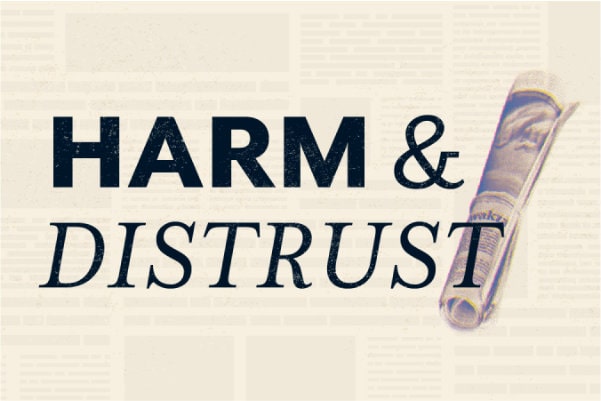

“Harm & Distrust” (Checkology virtual classroom).
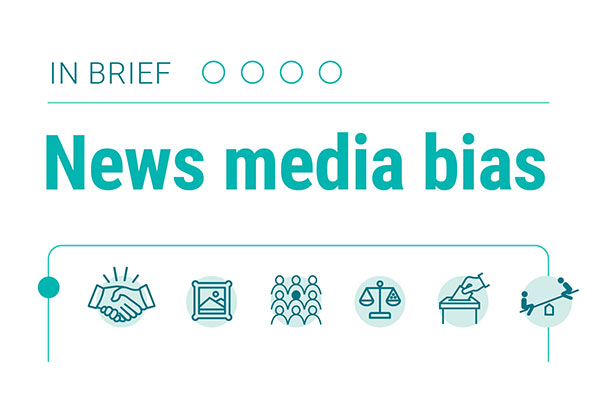

Infographic: “In brief: News media bias”
| Related: |
- “Unapologetically Inclusive: How PublicSource made community-centered journalism a newsroom-wide effort” (American Press Institute).


★ Featured classroom resource:
|
No, USAID doesn’t provide $8 million annually to fund Politico
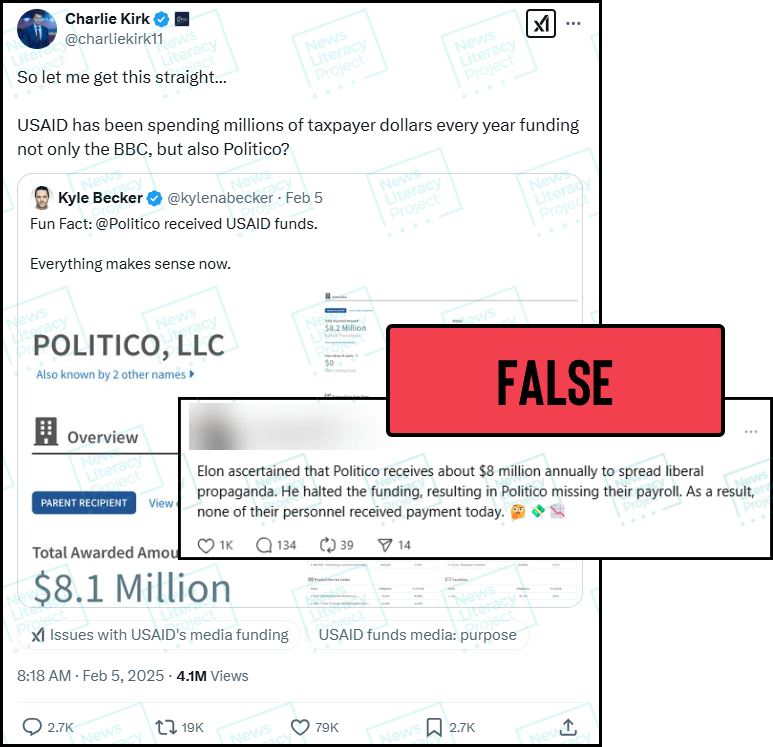

❌ NO: The U.S. Agency for International Development (USAID) does not provide Politico with $8 million in grant money a year.
✅ YES: The viral screenshots show the amount of money various government agencies have paid Politico for subscriptions to its specialty publications.
✅ YES: USAID paid $44,000 over two years for two subscriptions to Politico’s E&E News, its energy and environment publication.
✅ YES: In February 2025, as the Trump administration started making cuts to USAID, other false claims spread.
★ NewsLit takeaway
False claims often go viral when they are accompanied by something that feels like evidence, such as a screenshot from a government website. The images showing that Politico has received more than $8 million from various government agencies over the last decade are authentic, for example, but they are being mischaracterized in sensational social media posts. Here are some tips for finding additional context:
Be patient: When a claim starts trending on social media, expect to see uninformed hot takes that attempt to politicize, exaggerate or mischaracterize the situation. Good reporting takes time and waiting for standards-based news outlets to check the facts is a good way to stay informed.
Know what you don’t know: If viral news spreads about an unfamiliar topic – perhaps the inner workings of USAID – it’s important to search for additional context. Look for news stories published prior to current events to get a balanced perspective.
Balance Sources: Make a regular habit of getting news from a variety of sources. Doing a web search and reading different perspectives on an issue is a good way to avoid being misled.
No, Trump administration didn’t alter U.S. flag on government websites
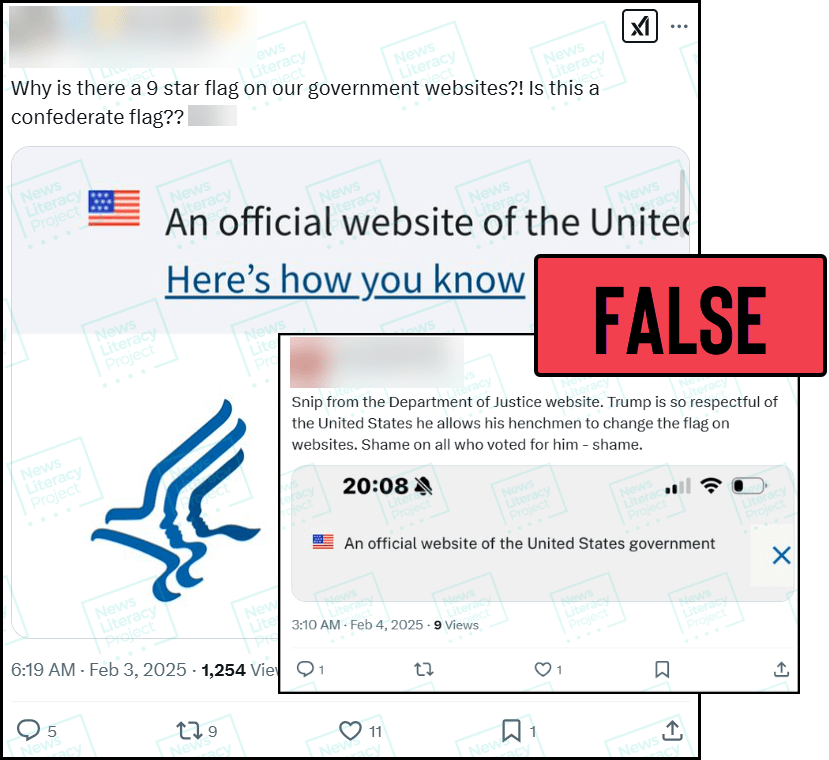

❌ NO: President Donald Trump did not alter the flags on government websites to reference the Confederacy.
✅ YES: Government websites have featured an American flag icon with only nine stars in their banners since at least 2021.
✅ YES: These icons use fewer than 50 stars because of their small size.
★ NewsLit takeaway
When social media content elicits an immediate and strong emotional reaction – such as claims that the American flag was unilaterally altered by a new president to represent the Confederacy – it is important to slow down to carefully examine the claim. Here are a few steps to check this viral rumor:
- Consider the source: Is this claim being spread by reputable sources?
- Look into the basic claim: Visit government websites to see if they truly feature a flag with nine stars. In this case, many do.
- Evaluate the specifics: The viral rumor claims that this is a “new” change. Use a web archive tool to see if this flag was present in previous years.
- Check credible sources: Do a web search to see if any standards-based news outlets have covered this claim. In this case, the fact-check website Lead Stories reviewed this claim and found this flag on government websites since at least 2021.


| Knowledge is power, and the founder of Bellingcat — an independent investigative collective of researchers, investigators and citizen journalists — says young people can empower themselves by using open-source investigation skills, or the analysis of openly available data, to verify what they see online. | |
| A Salvadoran restaurant in New Jersey lost the bulk of its business after a viral TikTok video falsely claimed that U.S. Immigration and Customs Enforcement agents had raided a second location and arrested customers. The restaurant owner said “people to be more aware of what’s actually happened before they believe TikTok and Instagram.” | |
| Student journalists at the University of Texas at Dallas went on strike and started a new publication after the editor-in-chief of the campus newspaper was removed from his role. Students say the editor was censored following coverage of a campus protest over the Israel-Hamas war, but university officials say it was for violating student media bylaws. | |
| The Los Angeles Times reportedly edited an op-ed that was intended to be critical of Health Secretary nominee Robert F. Kennedy Jr. so that it sounded favorable toward him. The piece was published after LA Times owner Patrick Soon-Shiong signaled support for Kennedy’s nomination, raising concerns about editorial independence at the legacy newspaper. | |
| Pausing or ending U.S. foreign aid may put small publications around the world in jeopardy — including local newspapers at the front line of the Russia-Ukraine war that provide critical crisis information. | |
| Amid a widespread housing crisis, homelessness is an important beat for news outlets but poses unique challenges for journalists. ProPublica shares how it approaches news coverage of the unhoused population, whether it’s considering the use of a person’s “street name” and what to do if a source asks for help. | |
| In 1971, Cloves Campbell was the only Black state senator in the Arizona legislature, and he had a difficult time finding a news source that covered Black communities adequately — so he bought The Arizona Informant newspaper. Over 50 years later, the paper continues to be published by his family and serves as a voice for Black Arizonans. |
Thanks for reading!
Your weekly issue of The Sift is created by Susan Minichiello (@susanmini.bsky.social), Dan Evon (@danieljevon), Peter Adams (@peteradams.bsky.social), Hannah Covington (@hannahcov.bsky.social) and Pamela Brunskill (@PamelaBrunskill). It is edited by Mary Kane (@mk6325.bsky.social) and Lourdes Venard (@lourdesvenard.bsky.social).
You’ll find teachable moments from our previous issues in the archives. Send your suggestions and success stories to [email protected].
Subscribe to this newsletterSign up to receive NLP Connections (news about our work) or switch your subscription to the non-educator version of The Sift called Get Smart About News here. |


Check out NLP's Checkology virtual classroom, where students learn how to navigate today’s information landscape by developing news literacy skills.
Visit us at newslit.org, checkology.org and rumorguard.org.
The News Literacy Project, a nonpartisan education nonprofit founded in 2008, is building a national movement to create systemic change in American education to ensure all students are skilled in news literacy before they graduate high school, giving them the knowledge and ability to participate in civic society as well-informed, critical thinkers.
The News Literacy Project
5335 Wisconsin Ave. NW, Suite 440, Washington, DC 20015
unsubscribe

